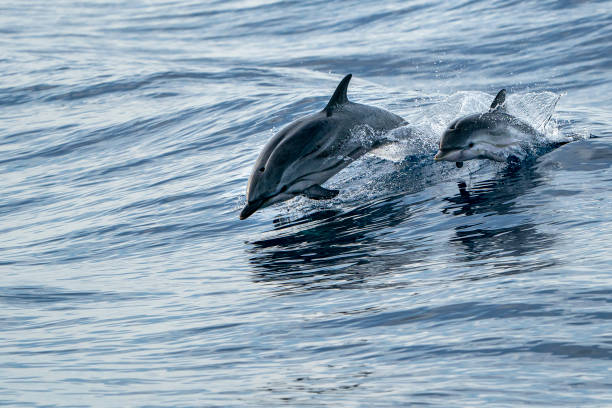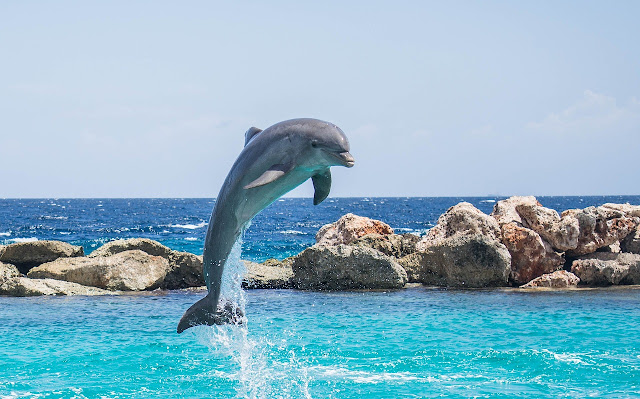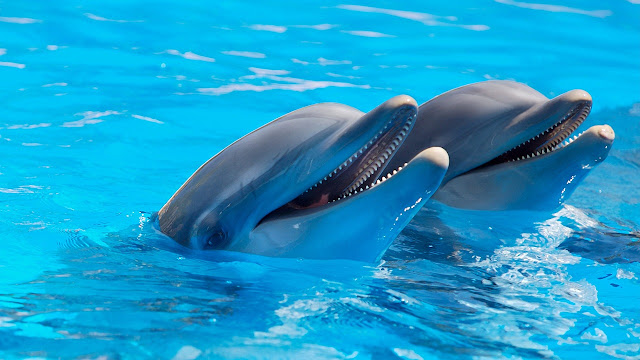Dolphins are highly intelligent and social marine mammals known for their playful behavior and remarkable adaptations. Here are some interesting facts about dolphins:
1. Diverse Species: Dolphins belong to the family Delphinidae and are part of a diverse group of species. Common dolphin species include the bottlenose dolphin, orca (killer whale) and the spinner dolphin.
2. Cetaceans: Dolphins are part of the cetacean group, which also includes whales and porpoises. They are characterized by their streamlined bodies, blowholes, and strong tails.
3. Size Variability: Dolphin species vary in size. The smallest like the Maui's dolphin, can be about 4 feet (1.2 meters) long, while the largest, the killer whale, can reach lengths of up to 32 feet (9.7 meters).
4. Echolocation: Dolphins use echolocation a system of sending out high frequency sounds and listening to the echoes, to navigate, locate prey and communicate with other dolphins.
5. Social Creatures: Dolphins are highly social animals and often form tight knit groups called pods. These pods can consist of just a few individuals or several hundred members, depending on the species.
6. Playful Behavior: Dolphins are known for their playful behavior, which includes riding waves, leaping out of the water and even playing with objects like seaweed or bits of coral. This playfulness extends to interactions with boats and swimmers.
7. Communication: Dolphins communicate with each other using a complex system of clicks, whistles and body language. Different species have their own unique vocalizations.
8. Tool Use: Some dolphin species have been observed using tools, such as marine sponges, to protect their rostrums while foraging on the seafloor.
9. Longevity: Dolphins have relatively long lifespans, with some species living up to 50 years or more in the wild.
10. Breathing: Dolphins are mammals, so they need to come to the surface to breathe air. They have a blowhole on top of their heads, allowing them to quickly take in air when they surface.
11. Protective Pods: Dolphins are known to protect and support injured or sick members of their pods, often swimming alongside them to assist in their buoyancy and safety.
12. Superb Swimmers: Dolphins are incredibly fast and agile swimmers. Some species can reach speeds of 60 kms per hour (37 miles per hour).
13. Global Distribution: Dolphins can be found in oceans and seas around the world, from the Arctic to the Antarctic. They are highly adaptable to different marine environments.
14. Assisted Therapy: Some therapy programs involve interactions between dolphins and individuals with disabilities or special needs. The therapeutic benefits of such programs are still a topic of research and debate.
15. Conservation Concerns: Several dolphin species are threatened or endangered due to factors like habitat loss, pollution, bycatch in fishing nets, and climate change. Conservation efforts aim to protect these charismatic marine animals and their habitats.
Dolphins continue to captivate people with their intelligence, social behavior and acrobatic displays. Their well documented interactions with humans have made them a subject of fascination and research for many years.





